 If you’re like most homeowners, you probably believe that one missed mortgage payment won’t have a noticeable impact on your FICO score. People get behind now and then, and besides, you’ve been faithfully making payments on time for years. How bad could it be?
If you’re like most homeowners, you probably believe that one missed mortgage payment won’t have a noticeable impact on your FICO score. People get behind now and then, and besides, you’ve been faithfully making payments on time for years. How bad could it be?
In truth, even one missed mortgage payment could seriously damage your FICO score. Lenders can report missed monthly payments whenever they choose – they don’t need to wait until a certain date to do it. That means even if your mortgage payment is a few days late, your lender may report it as unpaid.
So what exactly happens to a FICO score when you miss a mortgage payment? Here’s what you need to know.
Payment History: The Single Largest Factor In Determining Your Credit Score
FICO scores are calculated based on several different criteria, the largest of them being your payment history. A full 35% of your credit score is determined by how often you pay your bills on time and in full. And although FICO says that one or two late payments aren’t going to decimate your credit score, they will shave off some points that could have made the difference between a low-risk and high-risk interest rate.
Consumers With Higher Scores Have More To Lose
A 2011 FICO study analyzed the impact of late mortgage payments on consumer credit scores. The study grouped consumers into three groups based on their starting FICO score, with Consumer A having a score of 680, Consumer B a score of 720, and Consumer C a score of 780. The findings?
Even if you have a credit score of 780, being just 30 days late on a mortgage payment can result in a 100-point drop. And it can take up to three years to earn that credit back. In contrast, a consumer with a score of 680 who is 30 days late will see only a 70 point drop and can recover their original score within 9 months.
The takeaway? Contrary to popular belief, people with high credit scores stand to lose more from a missed payment than people with low credit scores.
There Are Varying Degrees Of “Late”
One common misconception is that if you miss a mortgage payment, it doesn’t matter if it’s 30, 60, or 90 days overdue. The mainstream thinking is that late is late is late. But that’s not how FICO sees it.
Although borrowers with credit scores under 700 won’t see much of a decline after 30 days late, borrowers with a higher credit score will. If you have a credit score of 720 and you’re 30 days late on your mortgage, your score will fall to about 640. If you’re 90 days late, that score will fall again this time, to about 620.
That means if you miss a mortgage payment, you need to get in touch with your lender as soon as possible in order make repayment arrangements and hope they haven’t yet reported the overdue payment. It’s your best shot at protecting your FICO score.
Credit scores can be vulnerable to all sorts of factors, which is why if you’re looking into mortgages, you’ll want to consult an expert. A qualified mortgage professional can help you find a mortgage you can afford, so your credit will stay intact. Contact your local mortgage expert to learn more.

 Home prices continued to rise at record rates in May according to S&P Case-Shiller Home Price Indices. National home prices rose by 16.60 percent year-over-year in May as compared to 14.80 percent year-over-year price growth in April. The 10-City Home Price Index reported home prices rose 16.40 percent year-over-year and 1.90 percent month-to-month.
Home prices continued to rise at record rates in May according to S&P Case-Shiller Home Price Indices. National home prices rose by 16.60 percent year-over-year in May as compared to 14.80 percent year-over-year price growth in April. The 10-City Home Price Index reported home prices rose 16.40 percent year-over-year and 1.90 percent month-to-month. If you have equity in your home, you may wonder how you can access it. You don’t want to sell your home, but you know you’ve earned a profit from it.
If you have equity in your home, you may wonder how you can access it. You don’t want to sell your home, but you know you’ve earned a profit from it. There are a few parts of American culture that people believe define this country. One element is the dream of homeownership. There is a strong belief that people need a place to call home. Therefore, since the dawn of this country, the government has tried to incentivize people to purchase a home.
There are a few parts of American culture that people believe define this country. One element is the dream of homeownership. There is a strong belief that people need a place to call home. Therefore, since the dawn of this country, the government has tried to incentivize people to purchase a home.  Last week’s economic reporting included readings from the National Association of Home Builders Housing Market Index, data on sales of new and previously-owned homes, and weekly reports on mortgage rates and jobless claims.
Last week’s economic reporting included readings from the National Association of Home Builders Housing Market Index, data on sales of new and previously-owned homes, and weekly reports on mortgage rates and jobless claims. There are many people who are looking at the housing market wondering if now is the time to make the jump from renting to owning. At the same time, is it more affordable to rent a home? Or, is it a smarter move to buy a home? Even though many people like the comfort of renting because it is someone else’s problem if something goes wrong, waiting too long to purchase a home could be costly. Here are a few of the most important points you need to keep in mind when it comes to renting versus buying a home.
There are many people who are looking at the housing market wondering if now is the time to make the jump from renting to owning. At the same time, is it more affordable to rent a home? Or, is it a smarter move to buy a home? Even though many people like the comfort of renting because it is someone else’s problem if something goes wrong, waiting too long to purchase a home could be costly. Here are a few of the most important points you need to keep in mind when it comes to renting versus buying a home. With all of the rigmarole that goes into packing up your old home and moving into the new one, there are a lot of details that can get lost in the mix. From cleaning up the old house to handing over the keys, there’s no shortage of small tasks that need to be completed. If you’ll soon be prepping for the exciting move into your next home, here are some ways to prepare yourself for this busy time.
With all of the rigmarole that goes into packing up your old home and moving into the new one, there are a lot of details that can get lost in the mix. From cleaning up the old house to handing over the keys, there’s no shortage of small tasks that need to be completed. If you’ll soon be prepping for the exciting move into your next home, here are some ways to prepare yourself for this busy time.
 If you’re just jumping into the game of home purchasing, you are likely considering all of your loan options and may even have heard the term mortgage rate lock. For those who don’t like to gamble, a mortgage rate lock can offer a bit of reassurance, but there are also some downsides to this type of protection. Before signing off on this, here are the details on rate locks so you can make an informed decision.
If you’re just jumping into the game of home purchasing, you are likely considering all of your loan options and may even have heard the term mortgage rate lock. For those who don’t like to gamble, a mortgage rate lock can offer a bit of reassurance, but there are also some downsides to this type of protection. Before signing off on this, here are the details on rate locks so you can make an informed decision. Last week’s scheduled economic reports included readings on inflation, Fed Chair Jerome Powell’s testimony before the House Financial Services Committee, and the University of Michigan’s Consumer Sentiment Index. Weekly readings on mortgage rates and jobless claims were also released.
Last week’s scheduled economic reports included readings on inflation, Fed Chair Jerome Powell’s testimony before the House Financial Services Committee, and the University of Michigan’s Consumer Sentiment Index. Weekly readings on mortgage rates and jobless claims were also released.
